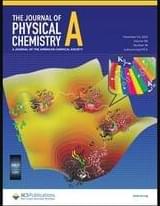The cloud condensation nuclei activation of sea spray aerosol (SSA) is tightly linked to the hygroscopic properties of these particles and is defined by their physical and chemical properties. While hygroscopic sea salt in SSA strongly influences particle water uptake, the marine-derived components that make up the organic fraction of SSA constitute a complex mixture, and their effect on hygroscopic growth is unknown. To constrain the effect of organic compounds and specifically surface-active compounds that adsorb on particle interfaces, particle hygroscopic growth studies were performed on laboratory-generated model sea salt/sugar particles. For sea salt/glucose particles, ionic surfactants facilitated water uptake at low relative humidity (RH), increasing the particle growth factor (GF) by up to 7.61%, and caused a reduction in the deliquescence relative humidity (DRH), while nonionic surfactants had a minimal effect. Replacing glucose with polysaccharide laminarin in sea salt/sugar/surfactant particles caused a reduction in GF at low RHs and minimized the effect of ionic surfactants on the DRH. At RHs above the DRH, the addition of anionic or nonionic surfactants caused a decrease in GF for both sea salt/glucose and sea salt/laminarin particles. The addition of cationic surfactants, however, did not have a dampening effect on water uptake of sea salt/sugar particles and even showed a GF increase of up to 3.7% at 90% RH. An increase in the complexity of the sugar dampens the water uptake for particles containing nonionic surfactants but increases the water uptake for cationic surfactants. The cloud activation potential for 100 nm particles analyzed in this study is higher for ionic surfactants and decreases with an increase in surfactant molecular size when particle interfacial tension is considered. The surfactant effect on the hygroscopic growth and cloud activation potential of the particles containing sea salt/sugar is dependent on the surfactant ionicity and molecular size, the particle size and interfacial tension, and the interactions between inorganic salt and organic species under different RH conditions.
